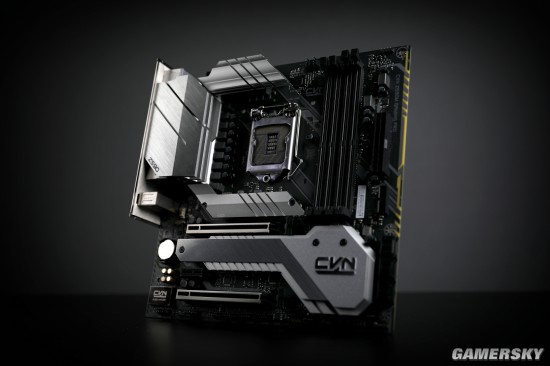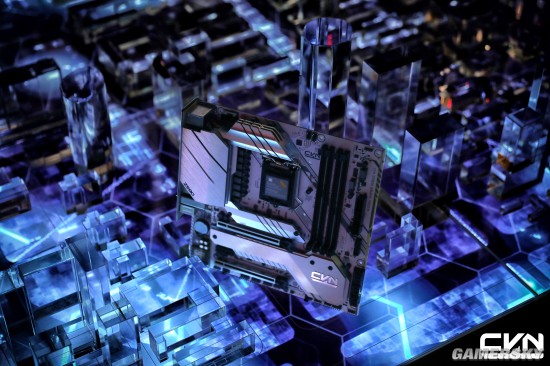The "latest" electronic warfare plane H -6G is a rare public appearance, revealing its uniqueness!
CCTV News:Not long ago, a "latest" electronic warfare aircraft rarely made a public appearance in a confrontation exercise of warships in the western Pacific airspace organized by the South China Sea Fleet of our navy.
It is "the latest" because it is the first time to play the role of "electronic warfare supporter". But in fact, the age of this fighter has been more than 10 years, and it is H -6G. We can see that the pod hanging under its wing is the electronic countermeasure pod, which can perform electronic jamming, suppression and anti-radiation combat tasks. In the previous air force exercise training, we also saw the picture of the J -7 flying leopard fighter mounting this pod.

So, what is an electronic warfare plane? Electronic warfare aircraft is a kind of aircraft that specializes in electronic reconnaissance, interference and attack on enemy radar, electronic guidance system and radio communication equipment. Its main task is to disable the enemy’s air defense system and cover its own aircraft to successfully carry out the attack mission. There are three main means of electronic warfare — —First, electronic interference.Using multi-band clutter to shield the enemy’s electromagnetic signals leads to the paralysis of the other party’s electronic communication system.Second, electronic deception.First, analyze the frequency of the other party’s electronic signal, and then cheat the other party’s electronic system with the same frequency electronic signal.The third is electronic destruction.. Use high-power microwave and electromagnetic pulse or anti-radiation missile to strike the electronic system of the other party soft or hard, especially high-power microwave and electromagnetic pulse can make the circuit generate instantaneous high voltage, thus burning the circuit board and completely paralyzing the electronic system.

The latest model of electronic warfare aircraft EA-18G "Growler" in active service of the US military can be said to be a representative model of electronic warfare aircraft, which can take off from the aircraft carrier and perform electronic attack missions. The U.S. military calls it the most powerful electronic warfare aircraft and the fighter with the strongest electronic jamming ability. So what’s extraordinary about this fighter?
In 2011, the civil war in Libya has lasted for two years. On March 17, many NATO countries led by the United States began military operations against Libya. The US military deployed dozens of fighter planes in this operation, including a brand-new naval aircraft, EA-18G Growler. Most fighters use missiles and bombs to fight, while growlers’ weapons are electromagnetic waves invisible to the naked eye.
Captain Scott Zanda of the United States Navy:"This is the EA-18G Growler. Its main task is to attack with airborne electronic equipment."
EA-18G Growler is an important part of air attack squadron. Its main purpose is to disable the opponent’s radar.

Captain Scott Zanda of the United States Navy:"The growler’s main job is to delay the time when the other radar detects us, or directly destroy it (radar)."

Growlers rely on electromagnetic interference to achieve their goals. The working principle is as follows: each wing tip of the growler has a receiver, which can search the radar signal of the other side’s surface-to-air missile, and these signals are transmitted to the computer in the growler’s cockpit. In a few milliseconds, the computer can analyze and judge whether the signal is safe or threatening.
If there is a threat, the growler will activate the jamming pod.

Captain Scott Zanda of the United States Navy:"Growler can be equipped with up to three jamming pods, one on each wing. They are all high-band jamming pods, and there is a low-band jamming pod under the belly of the aircraft."
Jamming pods suppress each other’s radar detection by sending electronic noise, allowing friendly aircraft to secretly pass through each other’s defense lines.
Captain Scott Zanda of the United States Navy:"Our task is to use electromagnetic interference to prevent the other party from finding out where we are."
Growlers can not only disturb each other, but also cause physical damage.
Captain Scott Zanda of the United States Navy:"Our main mission is jamming, and our second mission is to use the Hamm missile here on the wing."

Ham missile (HARM) is a high-speed anti-radiation missile, which is specially used to deal with ground-to-air radar devices.
Captain Scott Zanda of the United States Navy:"Hamm missiles will look for each other’s radar and try to destroy it."
EA-18G Growler is the most advanced electronic attack aircraft on the earth at present. It can locate jamming and destroy each other’s radar within one minute.

EA-18G Growler electronic warfare aircraft, strictly speaking, is an electronic attack aircraft in electronic warfare aircraft. Its length is 18.3 meters, its wingspan is 13.7 meters, and its maximum flying speed is 1900 kilometers per hour, which is equivalent to 1.6 times the speed of sound. Growler is based on the F/A-18E/F Super Hornet fighter of the US Navy.
There are many advantages to doing so. First of all, Growler inherits the excellent maneuverability and air combat capability of Super Hornet. When performing electronic attack missions, it not only does not need the protection of other fighters, but can even provide fire support for other fighters. Moreover, 90% of the parts of Growler are common with Super Hornet, which can undoubtedly greatly reduce the pressure of logistics support. In addition, it is relatively simple for the pilot of Super Bumblebee to fly growler, and it only needs a short period of training, saving time and money.
From Super Bumblebee to Growler, the biggest change is, of course, its newly designed electronic system. Corresponding to the surface of the fuselage, there are 66 additional antennas, which greatly enhance the growler’s comprehensive receiving ability of electronic signals and can locate the radiation source more accurately.
Let’s look at the growler’s belly and under the wing, which are the core components of the growler. Through them, the growler can effectively jam the radar and other electronic facilities 160 kilometers away, which exceeds the scope of most active air defense firepower. Let’s look at the wing tip of the growler. It’s not a missile, it’s a pod, and the tactical receiver inside is the only system in the world that can conduct electronic monitoring while jamming the other side in all frequency bands. Simply put, it means that the other party can’t hear each other, but the growler can hear their conversation clearly.
These new electronic devices on Growler weigh a total of 635 kilograms and need 1.5 million lines of program code to support them. Just speaking so badly, what is the performance of Growler on the battlefield?
The U.S. military’s Odyssey Dawn operation in Libya was the growler’s first actual combat.

Lieutenant Colonel Jay Mazkau, Vice Captain of the US Navy Electronic Attack Squadron:"In March 2011, the United States decided to establish a mandatory no-fly zone in Libya with the Coalition forces. In order to protect the troops in Libya from the threat of each other’s radar systems and surface-to-air missiles, they need growlers. "
When he arrived in Libya, the growler faced a powerful opponent, and the radar of Sam’s surface-to-air missile could find a target 33 kilometers high.

Lieutenant Colonel Jay Mazkao:"We know that we have a large number of opponents who are specially trained to shoot down planes with surface-to-air missiles."
Although he has served for two years, the growler still needs to be tested on the battlefield.
Lieutenant Colonel Jay Mazkao:In the United States, many people are paying attention to the performance of growler in actual combat, and have high expectations and great pressure on its first deployment. "
On March 18, 2011, Mazkau, the vice captain of the electronic attack squadron, and his wingman patrolled the Libyan coastline, and their radio station began to call.

Lieutenant Colonel Jay Mazkao:"We received a call, the other party has a Sam missile system may be running, which is a threat to our bombers and fighters. After getting the coordinates, we started flying towards it. "
Moments later, the Growler arrived in the airspace where the Coalition planes were located. They were all on standby, and no one wanted to test the skills of Libyan radar operators.
Lieutenant Colonel Jay Mazkao:"These operators are very well trained. This is something that no one can do. Like us, they are constantly training."
Sam’s surface-to-air missile is located very close to the target of the Coalition forces, an ammunition depot.

Lieutenant Colonel Jay Mazkao:"The other side knows that these targets are of high value and they want to stop us from destroying them, so they deploy Sam missiles around important targets."
Attack aircraft have firepower, but they need growler’s electronic attack to disable surface-to-air missiles.
Lieutenant Colonel Jay Mazkao:"My wingman and I were called, first to interfere with it, and then to destroy it with missiles."
The growler’s first challenge is to identify the radar signal, which depends on the electronic countermeasure officer to distinguish the noise.
Lieutenant Colonel Jay Mazkao:"A lot of things will make waves messy, radio signals, TV signals, ship radar, something you don’t want to look for. You must be meticulous, concentrate, eliminate false signals very quickly and find what you are looking for. "
Mazko has only one target, while Sam missile has many options.

Lieutenant Colonel Jay Mazkao:"We have F-15, F-18 and Harrier fighters of the Allied and American forces, all of which are concentrated in a very small area. It may take only 10 to 20 seconds for the Sam missile to be launched. This is very fast and everyone is very alert. "
Chaotic radio waves, crowded sky, below 3 kilometers, Libyan air defense missiles are ready to go. Whether Mazkau and the growler he is driving can screen the noise and destroy Sam’s missiles on the ground is related to the safety of dozens of Coalition aircraft.
Lieutenant Colonel Jay Mazkao:"They rely on us to shield each other’s radar. If a missile attacks them, they will be hit soon."
Mazko’s wingman looked for the radar signal and began to jam it. Beside it, Mazko is ready to launch the Hamm missile.

Lieutenant Colonel Jay Mazkao:"The first thing you feel when launching the Hamm missile is that the plane vibrates. It flies so fast that you can only see a tail smoke flying far away and then disappearing."
The smoke of Hamm missile disappeared, and so did the radar signal of the other side.
Lieutenant Colonel Jay Mazkao:"The other side’s Sam system stopped sending signals, and we knew that the target had been hit."
The threat was destroyed, and the Coalition forces began to air raid the ammunition depot and completed the task safely.
In the Odyssey Dawn operation, none of the allied fighters were shot down by Libyan fighters or anti-aircraft fire, and the escort of growlers undoubtedly played an important role. Growler has collected many latest scientific and technological achievements in the 21st century, but in fact, all these latest technologies originated from a technology developed 80 years ago, radar.

The principle of radar is no stranger to everyone, that is, it emits electromagnetic waves to illuminate the target, and then receives the echo to determine the height, direction and speed of the target. A few years before the start of World War II, Britain began to develop military radar in order to prevent German warplanes from attacking, and put this secret weapon into use in World War II. But soon Germany also developed a radar device. Both sides began to try their best to cheat each other’s radar, which is the embryonic form of electronic warfare. A typical example is that on June 5, 1944, the night before the Normandy landing, 10 bombers of the Allies flew back and forth along the English Channel, dropping a large number of metal chaffs, which reflected radar waves and caused echoes similar to those of airplanes. So these 10 Allied bombers created a nonexistent fleet on the German radar screen, which successfully attracted the attention of the Germans and covered the Allied landing in Normandy.
World War II made people see the role of electronic warfare, but it was only in its infancy. When more powerful weapons appeared, the technology of electronic warfare had to develop rapidly to meet new challenges.
During the cold war in 1960, in order to avoid the detection of Soviet radar and the attack of anti-aircraft guns, the United States developed a fighter plane that flew higher.

Roger Connor, Head of Aviation Department of National Air and Space Museum:"With the advent of the Cold War, jets began to dominate. They flew higher and faster, and it was much more difficult to lay them down than in World War II."
But the Soviet Union also came up with a new countermeasure, that is, using radar-guided missiles to attack them on the ground and in the air.
Roger Connor, Head of Aviation Department, National Air and Space Museum;"The way to deal with high-speed jets flying in the sky is to use radar to guide missiles."
Both sides are secretly developing weapons, and it will soon be found out who is better in actual combat.
Roger Connor:"The Soviet Union used surface-to-air missiles to shoot down the U-2 reconnaissance plane piloted by pilot francis powers for the first time, which was a famous event in 1960."

It was Sam II air defense missile system that won this record. Its radar can detect planes 112 kilometers away, and American high-altitude fighters and pilots suddenly became targets.
Roger Connor:"The U-2 driven by Bowles was shot down, and any military action since then will be affected by this new combat power."
In 1965, Sam II air defense missile systems that shot down the U-2 reconnaissance plane were deployed to Vietnam, and there were hundreds of them. American pilots had never faced such a deadly threat.

Colonel T.J. Williams, an expert in electronic warfare and attack weapons:"The height and speed of our plane can’t surpass the Sam II missile, so we can only rely on electronic technology."

A large number of aircraft in the United States have been upgraded and can jam radar by themselves, such as A-6 invaders, A-3 air fighters, and a variety of fighter planes that perform the task of suppressing each other’s air defense operations. Now they need a special electronic attack aircraft to interfere with other planes, so that bombers can only focus on their own tasks.
Colonel T. J. Williams:"Most aircraft have so-called self-protection interference, and what is lacking is the interference ability to protect multiple aircraft at the same time."
The U.S. military turned to Grumman Aerospace for help. Their solution was to transform an aircraft already on the assembly line, the A-6 intruder.
Colonel T. J. Williams:"A-6 is a new attack aircraft built for the navy. It is still in an early development period and can facilitate the accommodation of a large number of electronic devices in the design."

Three years later, the modified A-6 invader EA-6B appeared for the first time, and its more famous name was Wanderer. Wanderer has been in service for more than 40 years, and it is the first aircraft dedicated to electronic warfare. Wanderer was very advanced at that time and needed four crew members to operate it.
Major General Mark Weinrich of the United States Marine Corps:"The EA-6B prowler has four crew members, a pilot and three electronic countermeasures officers. The pilot is obviously in charge of the flight. He sits on the left in the front row to control the flight and complete all the things that the pilot needs to do."
The electronic countermeasure officer in the front seat is responsible for navigation, and the two in the back seat are responsible for interference. There are computer screens and keyboards in front of them.
Back in Vietnam, the rover crew knew that the first thing they wanted to interfere with was the deadly Sam II air defense missile system.
Roger Connor, Head of Aviation Department of National Air and Space Museum:"From the beginning, they knew that the ability of electronic interference was absolutely needed to complete the task in Vietnam."

The us navy can’t wait to bring the new plane into the battlefield. In 1972, four years after the first flight, EA-6B Rangers entered the war in the last months of the Vietnam War. Wanderers set out with hundreds of naval bombers to interfere with Sam II missiles trying to shoot them down.

What was the effect of the first application of Wanderer in Vietnam? It is difficult to give a clear answer to this question. Because electromagnetic waves are invisible and intangible, it is difficult for people to understand the role of electronic warfare without seeing objects destroyed or exploded. After all, even if all the planes involved in the war came back safely, it doesn’t mean whether the electronic warfare planes played a role or were lucky. For the U.S. Navy, the prowler whose equipment costs as much as $20 million is a gamble. In the subsequent Gulf War, Kosovo War and Iraq War, EA-6B participated in the operation.
During the 30 years from Vietnam War to Iraq War, the means of electronic warfare have changed greatly, the battlefield situation has become more and more complicated, and air defense weapons have been upgraded. How can EA-6B wanderers meet the new challenges? How does it cooperate with the ground forces to carry out unprecedented tasks? We will continue to tell the story of electronic warfare aircraft next week.

















